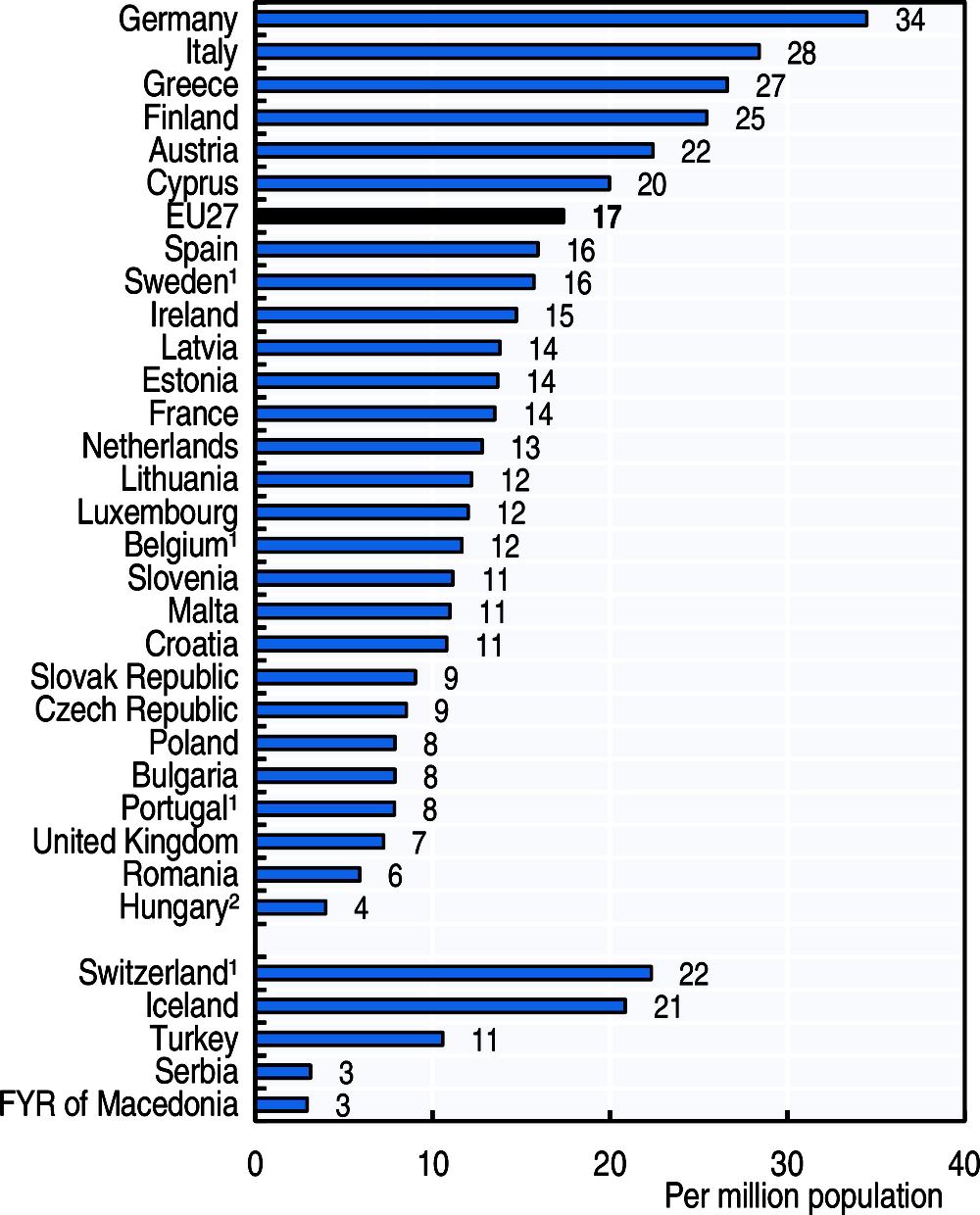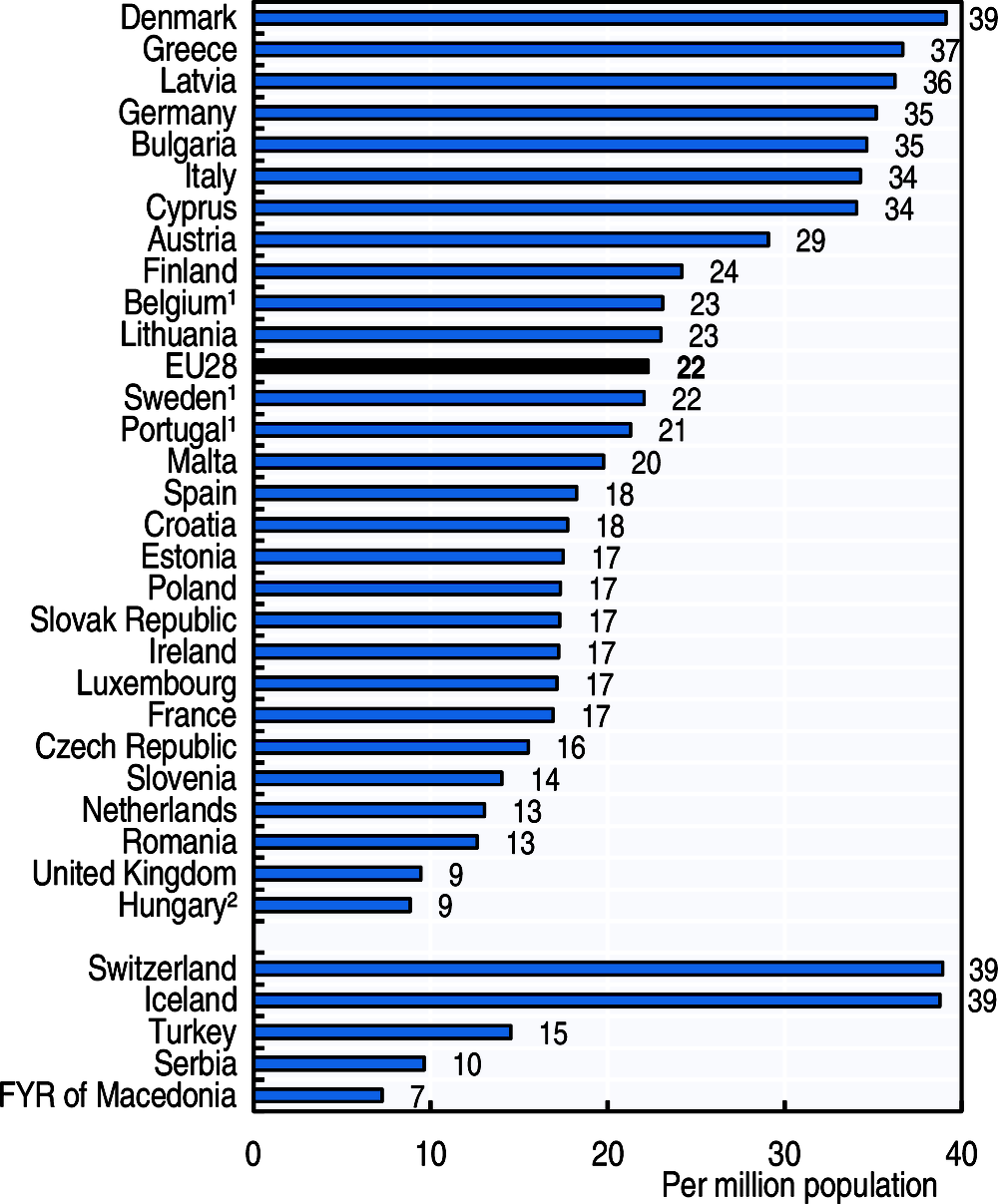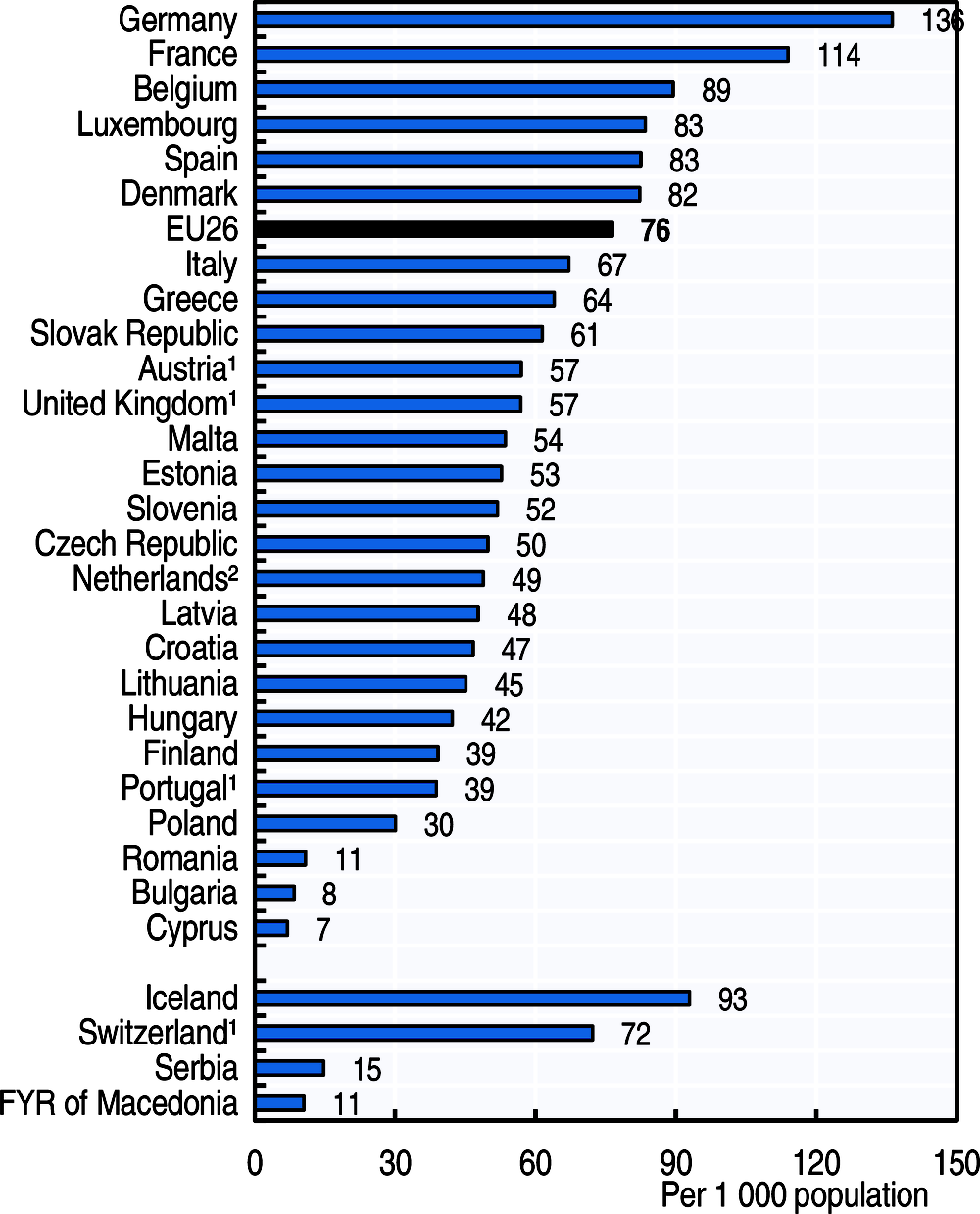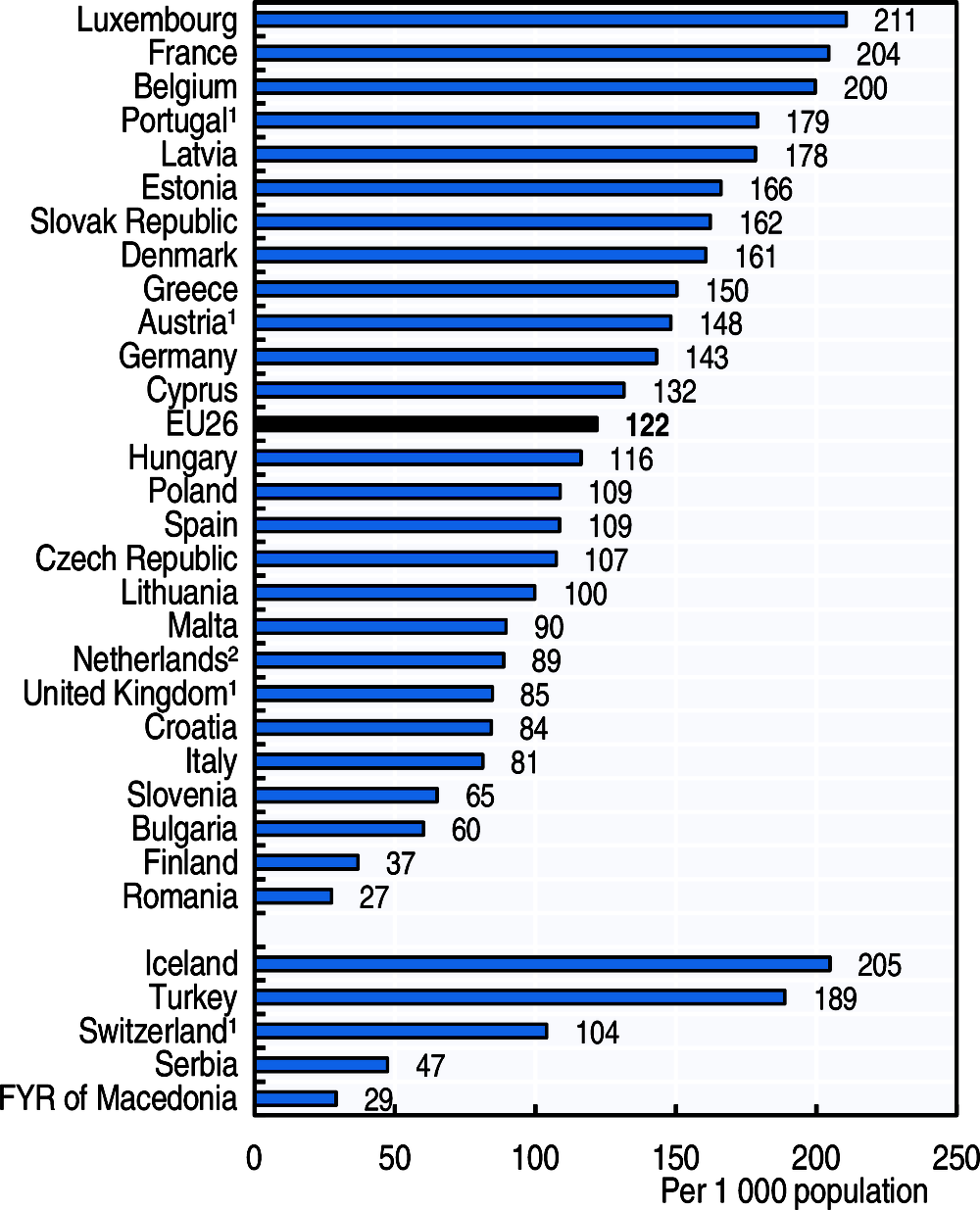Availability and use of diagnostic technologies
This section presents data on the availability and use of two diagnostic imaging technologies: computed tomography (CT) scanners and magnetic resonance imaging (MRI) units. CT and MRI exams help physicians diagnose a wide range of conditions. Unlike conventional radiography and CT scanning, MRI exams do not expose patients to ionising radiation.
There is no general guideline or benchmark regarding the ideal number of CT scanners or MRI units or exams per population. However, if there are too few units, this may lead to access problems in terms of geographic proximity or waiting times. If there are too many, this may result in an overuse of these costly diagnostic procedures, with little if any benefits for patients.
The availability and use of CT scanners and MRI units have increased rapidly in most European countries over the past two decades, but there remain large differences. Hungary, Romania and the United Kingdom have the lowest number of MRI units and CT scanners per capita among EU countries, whereas Germany, Italy, Greece and Finland have the highest number of MRI units per capita, and Denmark, Greece, Latvia and Germany have the highest number of CT scanners per capita (Figure 7.18 and Figure 7.19).
In Greece, many MRI and CT scanners are over 10 years old, and considered to be outdated and no longer adequate for conducting some exams, because all exams are reimbursed at the same rate regardless of the age of the equipment. In other countries like France, the reimbursement for an MRI or CT exam is reduced after a number of years, once the equipment is considered to be depreciated.
Data on the use of these diagnostic machines show that the number of MRI exams and CT exams per capita is lowest in Bulgaria and Romania, while they are highest in Germany (for MRI exams only), France, Belgium and Luxembourg (Figure 7.20 and Figure 7.21). These large variations in MRI and CT exams may indicate either an under-use in some countries or an over-use in others.
There are wide variations in MRI and CT exams not only across countries, but also within countries, suggesting differences in clinical practices. For example, in Belgium, recent analysis shows a 50% variation in the use of diagnostic exams of the spine between those provinces with the highest and lowest rates in 2017, and this variation is even larger across smaller areas (INAMI/RIVIZ, forthcoming). In the United Kingdom, the 2nd Atlas of Variation in NHS Diagnostic Services in England found large variations in CT and MRI exams across geographic regions, and concluded that there is a need for certain types of imaging tests to be increased in some places, which could be funded by reducing imaging tests of lower value in other places (Public Health England and NHS Right Care, 2017).
Clinical guidelines have been developed in some European countries to promote a more rational use of these diagnostic technologies. Through the Choosing Wisely® campaign, which began in the United States in 2012 and emulated in a growing number of countries since then, some medical societies have identified different cases when an MRI or CT exam is not necessary. For example, the Royal College of Physicians in the United Kingdom has recommended, based on evidence from the National Institute for Health and Clinical Excellence (NICE), that patients with low back pain or with suspected migraine do not routinely need an imaging test (Choosing Wisely UK, 2018).
While the data in most countries cover CT scanners and MRI units installed both in hospitals and the ambulatory sector, the data coverage is more limited in some countries. CT scanners and MRI units outside hospitals are not included in some countries (e.g. Belgium, Portugal and Sweden, as well as Switzerland for MRI units). For the United Kingdom, the data only include scanners in the public sector. For Hungary, the data cover only equipment eligible for public reimbursement. Denmark provides data on the number of CT scanners, but not on the number of MRI units.
Similarly, MRI and CT exams performed outside hospitals are not included in some countries (e.g. Austria, Cyprus, Portugal, Switzerland and the United Kingdom). Furthermore, MRI and CT exams for Cyprus not only cover public hospitals. The Netherlands only report data on publicly financed exams. Ireland and Sweden do report any data on MRI and CT exams.
References
Choosing Wisely UK (2018), Clinicians Recommendations: Royal College of Physicians, www.choosingwisely.co.uk/i-am-a-clinician/recommendations/#1528717718592-17c3e7e1-94f2.
INAMI/RIVIZ (forthcoming), Medical Practice Variations – Medical Imaging, Brussels.
Public Health England and NHS RightCare (2017), The 2nd Atlas of Variation in NHS Diagnostic Services in England, January 2017, London.




